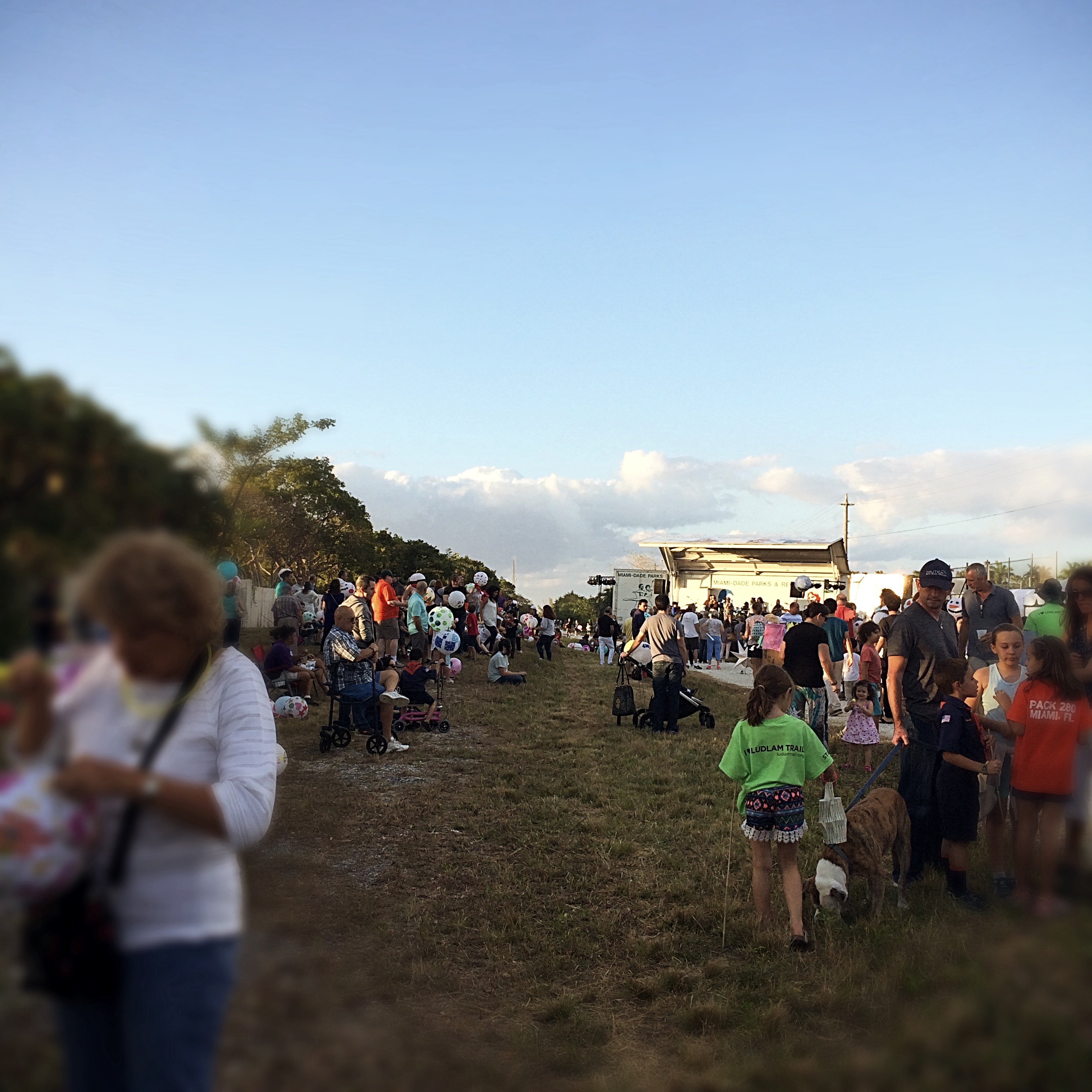The second annual Ludlam Nights was this past weekend, Oscar, my father and I decided to go and it just reminded me about this article I wrote a while ago about how unfortunate it is to invest in the Underline when Miami does not have the proper infrastructure to support its cause. Being in this event, hearing repeatedly about the future of Miami; there are bigger fish to fry..read below
The Underline
"Metro rail rolls to rave reviews" says a Miami Herald paper dated May 20th, 1984 and yet President Reagan called the federal subsidy for Miami Dade Transit a 'Million Dollar Mistake.' To Meg Daly and The Underline supporters it wasn't a mistake, it is an opportunity to make Miami a more healthy, walkable city which provides mobility, attracts development along the corridor and improves our economy. This could be true, at $120 million as far as I know the Underline has been a park for many years; unexplored, uncared for and not the answer for Miami's problems.
It was announced early November the most urban part of the Underline referred to as "The Brickell Backyard," will begin work next year using $5 million dollars in government grants. It will be successful as the area is walkable, offering a blend of entertainment, not to mention the new Brickell City Center. But, will the rest of the 9.25 Underline miles be the same? That is questionable in a city built by cars.
It is important to note, Transportation is the basis of Miami's foundation. With offers from Julia Tuttle "Mother of Miami," it wasn't until the severe freezes of 1894 and 1895 which opened Henry Flagler's eyes to the potential of South Florida by expanding his Florida East Coast Railway System. He hired John Sewell, whom Flagler worked previously with in West Palm Beach, to lay out Miami in a Cartesian style grid and build a hotel establishing Miami as a booming city.
Throughout the years, uncontrollable suburban growth surrounded Miami. In 1971, Miami Urban Area Transportation Study concluded the city was a candidate for a rapid transit system. Within a year, the proposal was approved and cost $132 million ($747 million today). Miami Dade Transit opened in 1984 servicing from Dadeland South to Overtown. The rails reached Tri-rail commuter rail line in 1989 never completing the original fifty miles of system due to cost overruns. Ridership averaged 15,000 between 1984-1985, far from the estimated 75,000. Ridership continues to be short. Miami lacks transit oriented development, we put cars before public transportation by building garages where riders inconveniently park to ride. We are car dependent, our urban design replaced open air entertainment with parking lots, drive thru's and enclosed buildings. So, how does the underline help?
The goal is to make Miami a modern city which offers mobility and circulation. The Underline is an excellent corridor for biking, however, many safety issues have to be addressed; predominately the interaction between bike and car at heavy intersections. Improving the M Path (Under Metro Rail) would be a benefit for those but I find it to otherwise fragment the city. Miami Dade Transit did not establish the best core for our city, it's circulation is incomplete not allowing for fast mobility.
It is hard to hear comparisons between the Underline and New York City's High Line. Having lived ten years in NYC and seeing the development, completion and usage, there is no resemblance. Manhattan and its four surrounding boroughs have invested in their subway, in transit oriented development, public spaces and pedestrians. The High Line works because it allows the pedestrian, who regardless is entertained by the high density development on the street level; to see their city in a different way. The elevated 1.45 miles allow these city dwellers to explore naturalized plantings, views of Manhattan, New Jersey and the Hudson River with different art installations throughout. James Corner, principle of Field Operations once said "The High Line is not easily replicable. Building a 'cool park' requires framework of neighborhoods around it to succeed."
We as viewers, psychologically are interested in exploring space that continues to amuse us; venturing to enhance our human condition and promote emotional well being with use of light, space, material and form.
How is the underline satisfying this urge? At Viscaya, the park will be meeting US1. Filled with cars, how can a visitor feel safe, enhanced by the fumes released by the automobiles a few feet away. Even with a tree barrier, the noise of traffic, the weather; what peace will that bring us. All these other linear parks (High Line, The 606 in Chicago, Paris Promenade Plantee) have come about because they are mostly interrupted, there was a demand for a future in circulation and mobility and is community driven (Atlanta BeltLine), it was worth spending the money.
In Miami, is it worth spending the money in fixing our infrastructure: thinking for the future of our city with the expected rising sea levels, flooding and strong storm surges. If not addressed there will be even less mobility and circulation here. We need to think of smart ways to make Miami an urban city. Fixing up a park for $120 million...there are far better ideas we can borrow which can help us create an identity of our own.

